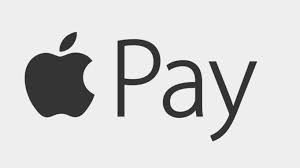 Last year’s Apple Pay launch helped raise the profile and prospects of mobile payments going mainstream in the US. In the process, it set off a litany of deal activity among various stakeholders vying to become the platform of choice for making and accepting payments from smartphones, according to a new eMarketer report, “US Mobile Payment Trends—Spring 2015: Post-Apple Pay Launch, Market Activity Heats Up.”
Last year’s Apple Pay launch helped raise the profile and prospects of mobile payments going mainstream in the US. In the process, it set off a litany of deal activity among various stakeholders vying to become the platform of choice for making and accepting payments from smartphones, according to a new eMarketer report, “US Mobile Payment Trends—Spring 2015: Post-Apple Pay Launch, Market Activity Heats Up.”
Apple itself hasn’t released any hard numbers on Apple Pay users or transactions, though several researchers have set out to monitor its progress. A sampling from a proprietary consumer panel operated by ITG Investment Research found that in November 2014, Apple Pay comprised 1.7% of total digital payment transactions and 1.0% digital payment dollars. That small share is still significant, considering that the system had only been live for approximately one month when the study was conducted.
Some of the earliest Apple Pay users were surveyed by retail researcher InfoScout in November 2014, with most reporting that they found the system easier, faster, more secure and more convenient than using a debit or credit card to pay for purchases.
In addition, Auriemma Consulting Group launched a bimonthly longitudinal consumer study to track Apple Pay adoption in January 2015. The first public release of data from its tracker on March 12 showed that more than 40% of new iPhone users had used Apple Pay at least once.
More specifically, 43% used Apple Pay only in stores, 37% used it to make purchases both in-store and within mobile apps, and 19% solely used it for in-app purchases. Even among new iPhone owners who hadn’t yet used Apple Pay, close to half (47%) reported intentions to do so within the next six months.
Based on these early accounts, Apple Pay is off to a strong start with lots of room to grow, but the rollout hasn’t been flawless. One issue has been fraudsters exploiting vulnerabilities within the card authentication process involving card-issuing banks, which has enabled some already-stolen credit card numbers to be loaded and used.
To be sure, Apple Pay is not the source of the stolen card account information, and legitimate transactions made with the system are still deemed highly secure. But that hasn’t stopped bad actors from trying to load stolen credentials sourced via other breaches to perpetrate fraud on the new system.
The checkout experience at participating merchants—something that Apple has little to no control over—has also stymied early users. In recent research conducted by Phoenix Marketing International, about two-thirds of surveyed users said they encountered issues like inexperienced cashiers and slow or inaccurate transactions when trying to use Apple Pay to make purchases.

